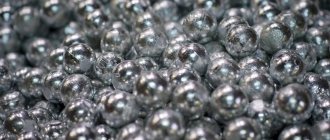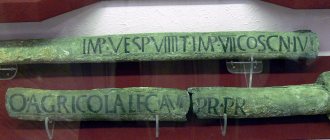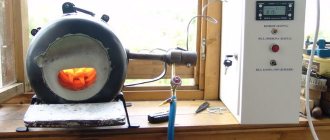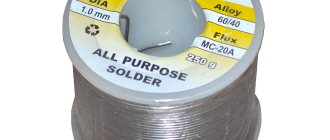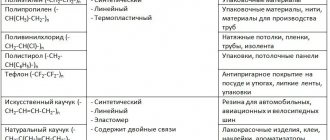4.1
Average rating: 4.1
Total ratings received: 279.
4.1
Average rating: 4.1
Total ratings received: 279.
In solid crystalline bodies, molecules are arranged in an orderly manner, forming a crystal lattice, the structure of which is reproduced throughout the entire volume - this arrangement of particles is called long-range order. When a body is heated, the kinetic energy of the molecules increases, and when the melting temperature is reached, the lattice structure begins to collapse, the solid body loses its shape - the melting process begins. When cooled, solidification occurs - a transition from the liquid phase to the solid phase.
Why does melting happen?
In the solid state, molecules and atoms are located at lattice sites, performing continuous vibrations near a fixed position. Such vibrations do not disturb the crystal structure. The strength of the lattice is provided by intermolecular bonds. In the process of heating a body, thermal energy is transferred, which is converted into the internal energy of molecules, increasing their speed and vibration frequency. When a certain critical value of temperature Tmelt (melting temperature) is reached, intermolecular bonds are broken, molecules leave their places, which leads to a change in the shape of the body, which begins to transform into a liquid state.
Rice. 1. Examples of the structure of crystal lattices: graphite, diamond, NaCl.
So, melting is the process of transition from a solid to a liquid state.
Melting of amorphous bodies
Amorphous bodies do not have a specific melting point. The structure of amorphous bodies is more like a very viscous liquid than a crystalline solid. When heated, they will become more fluid, increasingly exhibiting the property of a liquid. At the same time, the fragility inherent in the solid state will disappear. Simultaneously with melting, the temperature of amorphous bodies will increase.
Important! Simultaneously with melting, the temperature of amorphous bodies will continuously increase. Because such bodies do not have a specific melting point.
Examples of amorphous bodies
- rosin (coniferous tree resin);
- glass;
- ebonite;
- sealing wax;
- various plastics;
Note: Ebonite (“Ebenos” in ancient Greek - ebony) is vulcanized rubber with the addition of a large amount of sulfur, up to 50% of the mass of the rubber. The color of ebonite is usually dark brown or black. This material does not conduct electrical current - that is, it is a good insulator.
What is hardening
Observations show that if the molten substance is cooled, then when the temperature Tts (solidification temperature) is reached, the reverse process of transition from the liquid to the solid state begins. This phase transition is called solidification or crystallization. It has been experimentally proven that for crystalline solids Tmelt = Tres. “Hot” molecules lose speed when cooled and give off heat to the environment. The internal energy decreases, and particles, under the influence of molecular interaction forces, begin to “occupy” permanent positions, restoring the lattice structure.
The processes of melting and solidification do not occur abruptly, but gradually, so that solid and liquid components can coexist simultaneously. Experiments show that until the melting (or solidification) of the entire mass of a substance is completed, its temperature remains constant.
Metals whose melting point is greater than 16500C are called refractory. For example, the melting point of tungsten is 33700C. Therefore, long-lasting filaments for lamps are made from it. Refractory metals and their alloys are indispensable in rocket science, nuclear energy, metallurgy, space technology - wherever high heat-resistant properties are required.
Melting of crystalline bodies
In order for a crystalline body to begin to melt, it must be heated to a certain temperature. Some crystalline bodies will melt at low temperatures, while others will melt at high temperatures. That is, each substance has its own melting point. It can be found in the physics reference book. At the same time, until the substance melts, its temperature will not change.
Important! Crystalline solids have a specific melting point. Until the crystalline substance is completely melted, its temperature will not change!
Notes:
- Crystalline substances melt at the same temperature at which they will turn into a solid (crystallize).
- In order for a liquid substance to begin to crystallize, it must first cool to a certain temperature.
- The melting point and the crystallization temperature are the same temperature.
Examples of crystalline solids
- ice;
- lead;
- aluminum;
- mercury;
- iron;
- gold;
- silver;
Graphical representation of melting and solidification processes
A graph of the melting and solidification of crystalline solids provides a visual representation of the time dependence of these phase transitions.
Rice. 2. Water-ice melting and solidification graph.
Ordinary water is a good example to illustrate the phenomena discussed. In the presented graph, time t is plotted along the abscissa axis, and temperature is plotted along the ordinate axis. Let initially, at the moment of time t = 0, when the temperature of the ice (crystal) was equal to -400C, the heat supply - heating - will begin. Let us next consider the time dependence of the temperature dependence T(t):
- In section AB, from -400C to 00C (melting temperature of ice), ice exists in crystalline form;
- Section BC - the melting stage occurs, both ice and water are present. The temperature remains constant, equal to 00C;
- CD - at point C melting has ended, there is only a liquid phase - water;
- DE - at point D heating has stopped, cooling occurs up to point E, i.e. up to a temperature of 00C. Only liquid water is present;
- EF - at point E, solidification begins, ice crystals appear, but at the same time there is also a liquid phase. The temperature remains constant, equal to 00C;
- FK - at point F complete solidification has occurred, only ice remains in crystalline form, the temperature of which gradually decreases.
Read also
Wood structure
Wood structure By making only a cross section, you can clearly see the structure of the wood. Each block of unhewn wood has bark - this is the skin of the tree, which is not used in work; it must be removed. Beneath the bark is the tree's growth zone, which
Wood structure
Wood structure By making only a cross section, you can clearly see the structure of the wood. Each block of unhewn wood has bark - this is the skin of the tree, which is not used in work; it must be removed. Beneath the bark is the tree's growth zone, which
LECTURE No. 1. Structure of wood
LECTURE No. 1. Structure of wood 1. Types of tree species and parts of wood Growing trees have the following components: roots, trunk, branches, leaves. The root system of trees acts as a supplier of moisture and nutrients from the soil along the trunk and branches to the leaves.
Macroscopic structure of wood
2. Macroscopic structure of wood With a cross section of a tree trunk, the main macroscopic features can be established: sapwood, core, annual layers, pith rays, vessels, resin ducts and pith repetitions. Young trees of all species have wood
Structure of metals
1. Structure of metals Metals and their alloys are the main materials in mechanical engineering. They have many valuable properties, mainly due to their internal structure. A soft and ductile metal or alloy can be made hard and brittle, and vice versa. In order to
Properties of glass melts
Properties of glass melts The properties of glass melts include viscosity, the associated hardening rate, surface tension and crystallization, as well as heat capacity, thermal conductivity, and electrical conductivity. The significance of these properties in production
§ 3.3 The structure of atoms and Mendeleev’s periodic law
§ 3.3 The structure of atoms and Mendeleev’s periodic law The properties of simple bodies, as well as the forms and properties of compounds of elements, are periodically dependent (or, expressed algebraically, form a periodic function) on their atomic weights. DI. Mendeleev It is believed that
§ 3.6 Structure of nuclei
§ 3.6 Structure of nuclei The more nucleons must fit in the nucleus, the greater the surface area of the nucleus, where protons and neutrons are added... These features are best met by the shape of the nucleus in the form of two Cheops pyramids connected
§ 4.14 Structure of matter and chemical bonding
§ 4.14 The structure of matter and the chemical bond What finally appears to us as hardened and dense must undoubtedly consist of hooked principles, linked together like intertwined branches. In this category of things, taking first place in it, There will be diamonds
Chapter 32 The Structure of Space – Time
Chapter 32 Structure of Space - Time “Action is the curvature of the World” Pavel Dmitrievich Uspensky, 1911 We have already assumed analogies of the quantum structure of the microworld and the macroworld, under certain conditions. Next, the laws of the resonant structure of our
What is specific heat of fusion
The specific heat of fusion λ (Greek letter “lambda”) is a physical quantity equal to the amount of heat that must be transferred to a solid body weighing 1 kg in order to completely transform it into the liquid phase. The formula for the specific heat of fusion looks like this:
$ λ ={Q \over m}$ (1)
Where:
m is the mass of the melting substance, kg;
Q is the amount of heat transferred to the substance during melting, J.
The values of λ for different substances are determined experimentally. The dimension λ follows from formula (1):
$ [λ] = { [J]\over [kg] } $ (2)
Knowing λ, we can calculate the amount of heat Q that must be imparted to a body of mass m for its complete melting:
$Q={ λ * m}$ (3)
When cured, exactly the same amount of heat will be returned to the environment.
When heated, some substances bypass the melting stage and immediately evaporate. This process is called sublimation or sublimation. An example of such a substance is crystalline iodine. The reverse transition from the gaseous state, which occurs without the formation of a liquid phase, is called desublimation. Examples of such transitions are the formation of iodine crystals from iodine vapor and the precipitation of frost and snowflakes from water vapor in the air.
Rice. 3. Formation of frost patterns on glass.
Melting point table
| Low-melting metals | |
| Lithium | + 180 °C |
| Potassium | + 63.60 °C |
| Indium | + 156.60 °C |
| Tin | + 2 320 °C |
| Thallium | + 3,040 °C |
| Cadmium | + 3 210 °C |
| Lead | + 3 270 °C |
| Zinc | + 4 200 °C |
| Medium melting metals | |
| Magnesium | + 6 500 °C |
| Aluminum | + 6 600 °C |
| Barium | + 7 270 °C |
| Silver | + 9 600 °C |
| Gold | +10 630 °C |
| Manganese | + 12 460 °C |
| Copper | + 10 830 °C |
| Nickel | + 14 550 °C |
| Cobalt | + 14 950 °C |
| Iron | + 15 390 °C |
| Duralei | + 6 500 °C |
| Brass | + 950 – 10 500 °C |
| Cast iron | + 1,100 – 13,000 °C |
| Refractory metals | |
| Titanium | + 16 800 °C |
| Platinum | + 17 690 °C |
| Chromium | + 19 070 °C |
| Zirconium | + 18 550 °C |
| Vanadium | + 19 100 °C |
| Iridium | + 24 470 °C |
| Molybdenum | + 26 230 °C |
| Tantalum | + 30 170 °C |
| Tungsten | + 34 200 °C |
Is metal melting physical or chemical?
Is the melting of graphite and metal a physical or chemical phenomenon? Why?
Answers and explanations 1
Physical phenomena, because melting under fire causes deformation. These are physical phenomena.
Do you know the answer? Share it!
How to write a good answer?
To add a good answer you need:
- Answer reliably those questions to which you know the correct answer;
- Write in detail so that the answer is comprehensive and does not prompt additional questions;
- Write without grammatical, spelling and punctuation errors.
- Copy answers from third-party resources. Unique and personal explanations are well appreciated;
- Answer not to the point: “Think for yourself,” “Easy,” “I don’t know,” and so on;
- Using swear words is disrespectful to users;
- Write in UPPER CASE.


